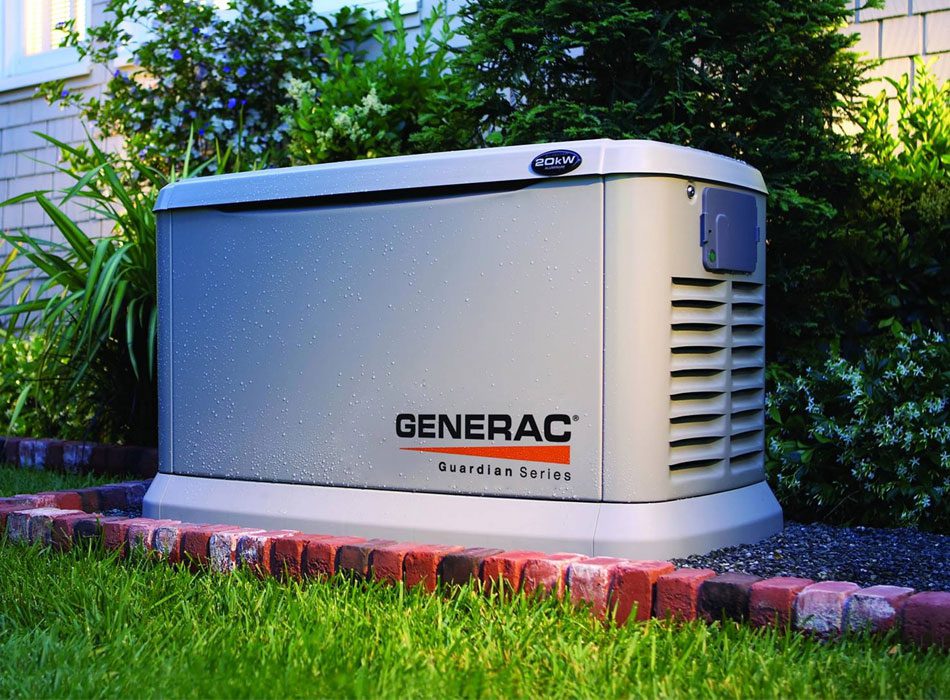
Everyone has experienced at least short periods where the connection to steady electrical power is interrupted. In many cases, this interruption of electricity is short, and you are often reconnected before it causes any real problem beyond inconvenience. But if you live in a more rural area or one that received snow that can lead to a delay in repairs, you may be out of power for longer.
Some people try to work around this issue by having a portable generator. Unfortunately, this type of generator is more for providing electricity to power tools when there is no convenient power source, which means these glorified batteries can’t do that much. By choosing HedgeHog Electric for your home generator installation in St. George, UT, you can power your home effectively and not be left to the mercy of interrupted electrical lines.
Call 877-673-9751 or contact us online to schedule reliable & lasting replacement or generator installation in St. George, UT, or the surrounding area today!
A permanent standby generator is a machine that provides your home with the power you need to operate your electrical system when its normal supply of power has been interrupted. A standby generator constantly monitors your electrical system and turns on automatically in the event of a power outage.
HedgeHog Electric & Solar is proud to be a Certified Dealer for Generac, one of the leading names in backup generator technology in the United States. That means we proudly install high-quality, dependable products that will be there for you when you need them most, and we offer ongoing support for all of these systems to ensure you’re never without the energy you need.
Depending on the type of generator you choose, it should be able to power these devices:
Home standby generators are able to provide power to these devices thanks to how they are hooked into your electrical system. First, you have the generator with an independent fuel source. Next, there is a transfer switch, which allows your home’s electrical system to transfer its energy needs to the standby generator.
Lastly, there is a service entrance breaker. This component protects the transfer switch, circuit breaker, internal house breakers, and the generator as power is transferred from the generator to your home.
Standby generators operate on a variety of fuels such as diesel, natural gas, propane, and gasoline. Depending on the type of generator you have, it should turn on within the first minute of you losing power.
As complicated electrical installations need an experienced hand in performing the installation services, it makes sense to call in HedgeHog Electric for your generator installation needs.
Whenever your power unexpectedly goes out, a generator can be very convenient in getting your home back on its feet for the time being. However, it is very important to know how to safely operate your home generator
Follow the following tips in order to safely use your generator:
Although you may be eager to use your generator for each of your home’s appliances, it is essential to not overpower your generator. Know how many watts of power each of your appliances need so you can prioritize.
Running your generator inside your home or too close to the living space can lead to carbon monoxide poisoning. Carbon monoxide can kill quickly, so be sure not to use your generator in your garage, crawl space, or basement. You will want to make sure that your generator is at least 4 feet clear of space on all sides and is not near an open window or door.
Since generators turn their mechanical energy into electricity, there is a chance of electrocution if you are not using your generator properly. Be sure not to run your generator in a wet area and keep it covered with a canopy in case of rain.
Whenever it’s time to refuel your generator, be sure to let the engine cool down first. If your generator has been running for hours, not letting it cool before refueling can cause a dangerous explosion.

Having a standby home generator can protect your house from the unexpected loss of power, which can ensure that the food in your fridge doesn’t spoil, you aren’t left in the dark, and you don’t have to deal with any other inconveniences when power is disrupted. Also, if you have any medical equipment you need to power, such as a CPAP machine, having a generator can help ensure that you aren’t left without your necessary electronics.
But choosing and installing a generator can be difficult and potentially dangerous, as it requires you to connect the machine into your home’s main electrical system. Instead of attempting it on your own, one of HedgeHog Electric’s residential electrical services is generator installation St. George and nearby areas.
With the help of our experienced electricians, you can have your own home generator safely installed. We will help you determine the size that you need to power your essential electronics and go over the various pros and cons of the different fuel sources.









Read Our Shockingly Good Reviews!
“Quality of work is top notch!!! Leslie, Russel, Lorenzo and Victor you guys ROCK!”
“Professional and courteous service. No gimmicks, up-front pricing, and the work is completed to code.”
“I was given the same professional service that someone with major issues would be given.”
“Victor was my technician, he was very friendly and professional. He explained the fees up front before starting the job gave me a few options”
“Every aspect of the job was excellent. On time, professional, let me know exactly the problem.”
“Quick response and they squeezed me into their schedule.”
“My third local contact was HedgeHog in Hurricane. They gave immediate attention to my problem, scheduled an appointment and provided an excellent technician and customer service! Thanks!”
A HedgeHog Always Gets the Job Done!
Our electricians are hardworking, dedicated, and focused on meeting the needs of our clients. Your safety is our very top priority, and we go above and beyond to ensure that all electrical installations, repairs, and other services are done in a way that ensures the optimal functioning of your electrical systems. If you are looking for an expert electrician in St. George, Utah, you can count on us to deliver exceptional electrical services.